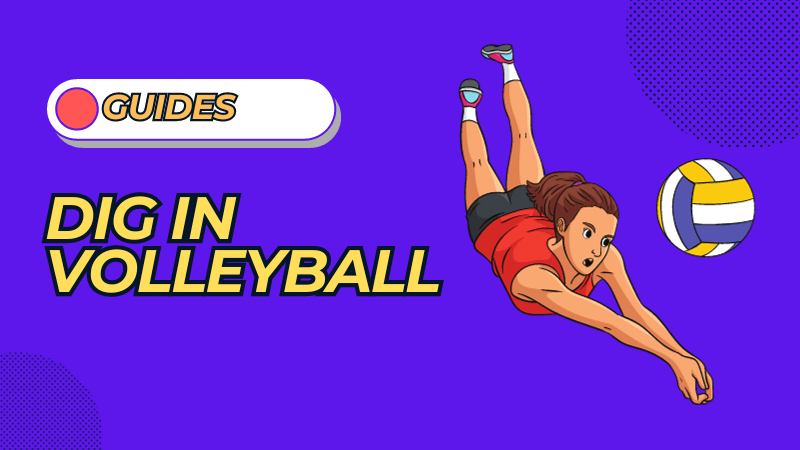On the volleyball court, the thrill of a fast-paced game can suddenly become a moment of dread. The ball is flying toward your side, and it’s up to you to prevent it from hitting the ground. That’s where the art of the “dig” comes in, a defensive move that’s essential for keeping the rally alive.
But mastering the dig is no easy task. It requires precision, quick reflexes, and a keen eye on the opponent’s movements. Get low, lean forward, and be ready to move – these are the essentials, but they come with challenges.
Did you know that digging is important for everyone on the team, not just the defensive specialists? It’s true, yet it’s one of the skills many volleyball players find difficult to perfect. Stick with me as we dive into digging in volleyball, uncovering techniques, drills, and the essential tips that can make you a master digger on the court.
What Is the Definition of Dig in Volleyball?
A dig in volleyball refers to the defensive technique of receiving an attacked ball from the opposing team. It involves using the forearms to pass the ball to a teammate for a set or an attack, with the ultimate goal of preventing the ball from touching the ground.
This skill is typically performed by hitters when the ball is hit with force and is aimed toward the defender’s side of the court. Mastering the dig is essential in maintaining the game’s flow, allowing the team to continue the rally and possibly stage a counterattack.
Digging the ball is not just about reflexes; it’s about reading the game, positioning yourself correctly, and executing with perfect timing.
From professional players to enthusiastic beginners, the dig remains a cornerstone in playing effective defense in volleyball. It’s a skill that brings excitement and challenge to the game, and learning it can make all the difference in turning a good player into a great one.
What Is the Point of Digging in Volleyball?
The main point of digging in volleyball is to prevent the opposing team’s players from scoring a point. When the opposing team attacks the ball with force, the defensive specialist or liberos employs the digging technique to receive it and keep it in play.
By successfully executing a dig, the defensive player sets up their team for a counterattack or a controlled set, allowing their team to score a point. Digging is more than just a reactive move; it’s a strategic defensive play that can shift the game’s momentum.
In essence, digging is a crucial defensive skill that helps maintain the game’s flow, allowing the team to transition smoothly from defense to offense. It’s not just about keeping the ball off the floor; it’s about turning defense into a launching pad for a successful attack. This dynamic interplay between defense and offense underscores the importance and complexity of digging in volleyball.
Mastering Different Types of Digs in Volleyball
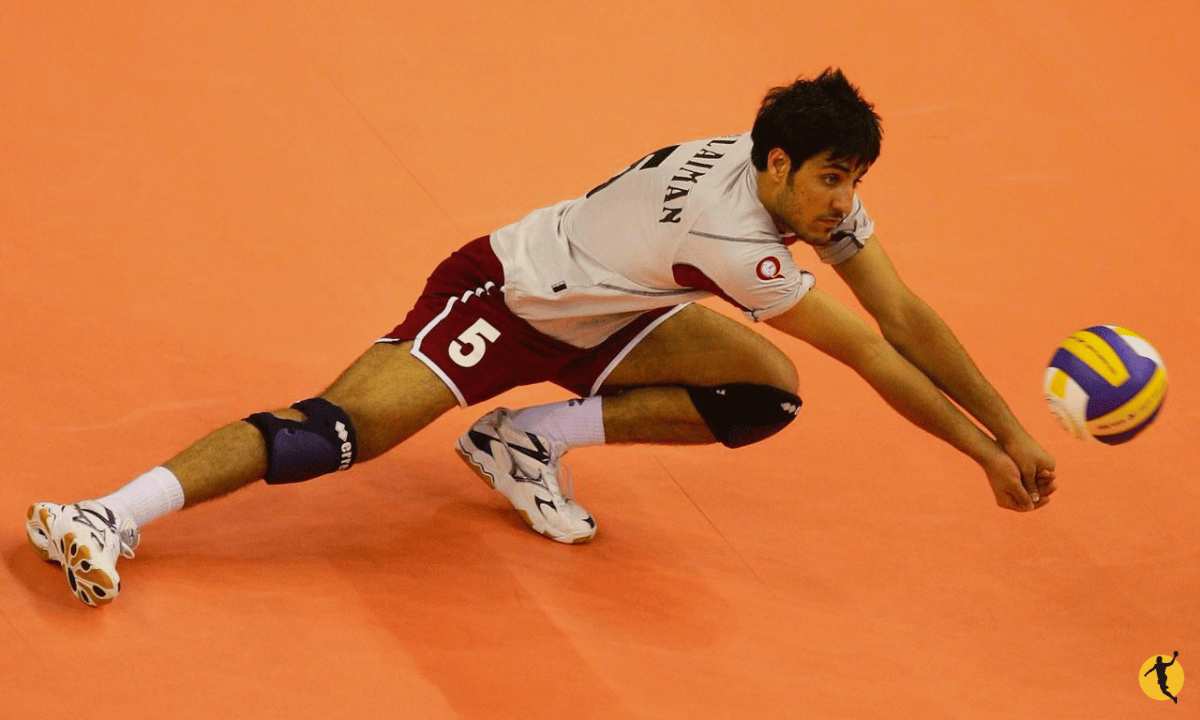
Transitioning from defense to offense in volleyball often hinges on the player’s ability to execute different digs. Mastery of various digging techniques can transform a game and empower a volleyball team to respond effectively to diverse attacking strategies. Let’s explore three common types of digs that players frequently use:
The Absorb Pass Technique
An absorb pass is where the defender absorbs the energy of the attacking ball by letting it hit their forearms and then directing it to a teammate. This technique is often used when the attacking ball carries a lot of force and speed, and the goal is to control the ball and keep it in play rather than sending it high into the air.
Executing the Diving Pass
A diving pass is a more dynamic dig, where the defender dives to the ground to make a play. It’s typically used when the attacking ball is low and close to the ground. The defender must extend their arms and dive forward, making contact with the ball to keep it in play. Timing and agility are key to performing this challenging move effectively.
Perfecting the Overhand Pas
An overhand pass, or a set, is a type of dig where the defender uses their hands together to direct the attacking ball to a teammate. This technique is most suitable when the attacking ball is high and can be controlled with the hands. The defender uses their fingers and wrists to set the ball accurately to a setter for a set or an attack, making it a vital tool for smooth ball handling.
Effective Techniques – How to Dig A Volleyball
Moving forward, it’s essential to understand that more than simply knowing the types of digs is needed, execution is the key. Mastering the art of digging requires attention to several critical elements distinguishing between an ordinary play and a game-changing moment. With proper skill, focus, and technique, you can dig a ball perfectly. Here’s what you need to focus on:
Power
Power in digging comes from generating enough force in your forearm passes to control the attacking ball. This strength isn’t solely in the arms; it involves utilizing the legs, core, and upper body to absorb the force of the ball. Properly harnessed power ensures the ball is kept in control and directed accurately.
Preparation
Proper preparation goes beyond physical readiness; it’s also a mental game. The defenders should anticipate the attacking ball’s trajectory and position themselves appropriately. This means having a balanced stance, bent knees, and arms ready to get the ball. Quick reactions and good footwork are essential, enabling you to move into a ready position swiftly.
Angle
The angle at which the defender contacts the ball plays a significant role in controlling its path. You should aim to contact the ball in the center of your forearms, creating a flat platform. This platform guides the ball accurately to a teammate, ensuring that the angle of contact is conducive to the intended direction of the pass.
Positioning
Effective positioning on the court is vital. It means understanding and anticipating where the attacking ball will go and adjusting your position accordingly. This requires a deep understanding of the game and ongoing communication with teammates. Proper positioning will put you in the right place at the right time, allowing for a successful dig and a smooth transition to the next phase of play.
Tips and Tricks for Pain-Free Volleyball Dig
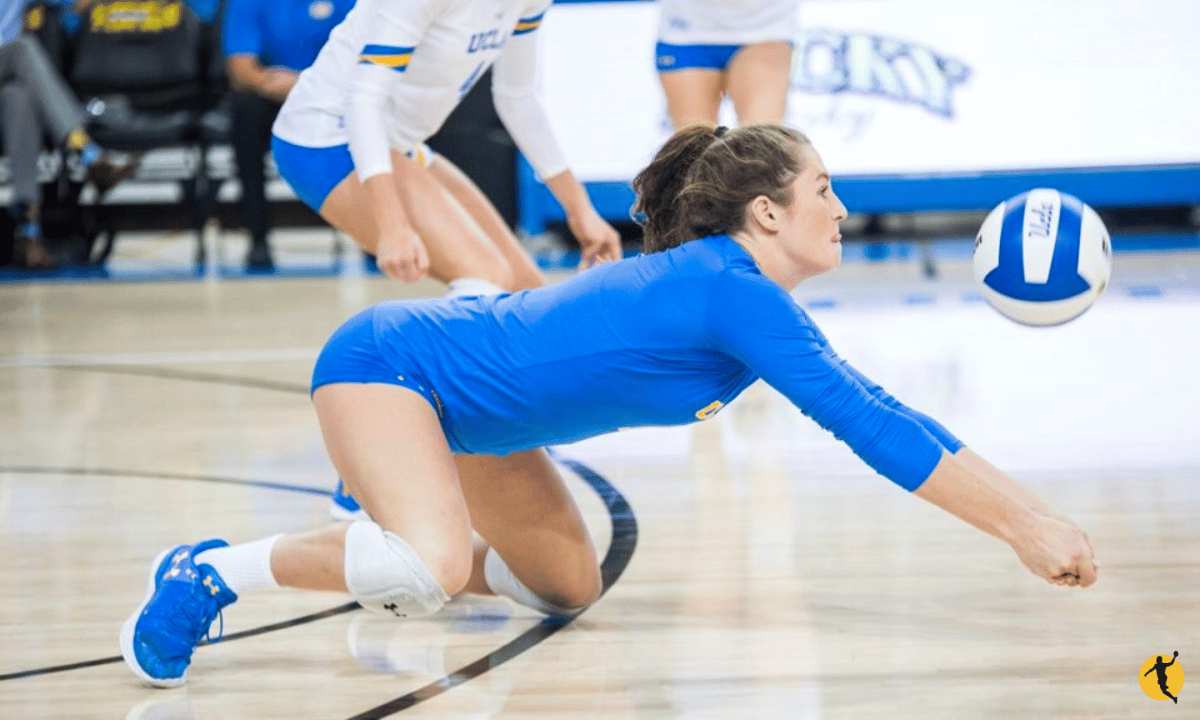
Digging in volleyball is a physically demanding task that requires skill, precision, and proper technique. While it’s an essential part of the game, improper digging can lead to pain or injury. Here’s how you can ensure that your digs are effective without causing harm:
Proper Technique
Focusing on the correct forearm pass technique is paramount. Keeping your wrists firm and your arms relaxed helps distribute the force of the ball and minimizes the risk of injury. Practicing under guidance and being mindful of every movement will make this second nature to you.
Strength and Conditioning
Specific strengthening exercises can improve your ability to generate power and absorb the force of an attacking ball. Working on your core, legs, and upper body through targeted exercises like lunges, squats, and planks will enhance your performance and resilience.
Flexibility
Flexibility in the shoulders, wrists, and hips is vital to prevent strain and reduce injury risks during digging. Regular stretching and warm-up routines will maintain your flexibility, allowing for a wider range of motion and adaptability in different game scenarios.
Proper Warm-up
Warming up is more than a pre-game ritual; it’s a safety measure. Engaging in dynamic stretches, light cardio, and warm-up drills prepares your muscles and joints for the physical demands of digging. It’s a crucial step that ensures your body is ready for the game’s intensity.
Rest and Recovery
Even the most seasoned players need time to rest and recover. Scheduling adequate rest between practices and matches helps prevent overuse injuries. Adequate sleep, hydration, and nutrition play a vital role in recovery, ensuring that you can maintain peak performance without the risk of pain or injury.
By embracing these tips and tricks, digging becomes a skillful and pain-free part of your game, allowing you to excel on the court without sacrificing your well-being. Physical readiness, mental sharpness, and a commitment to continuous improvement make all the difference.
Enhancing Your Digging Skills Through Training
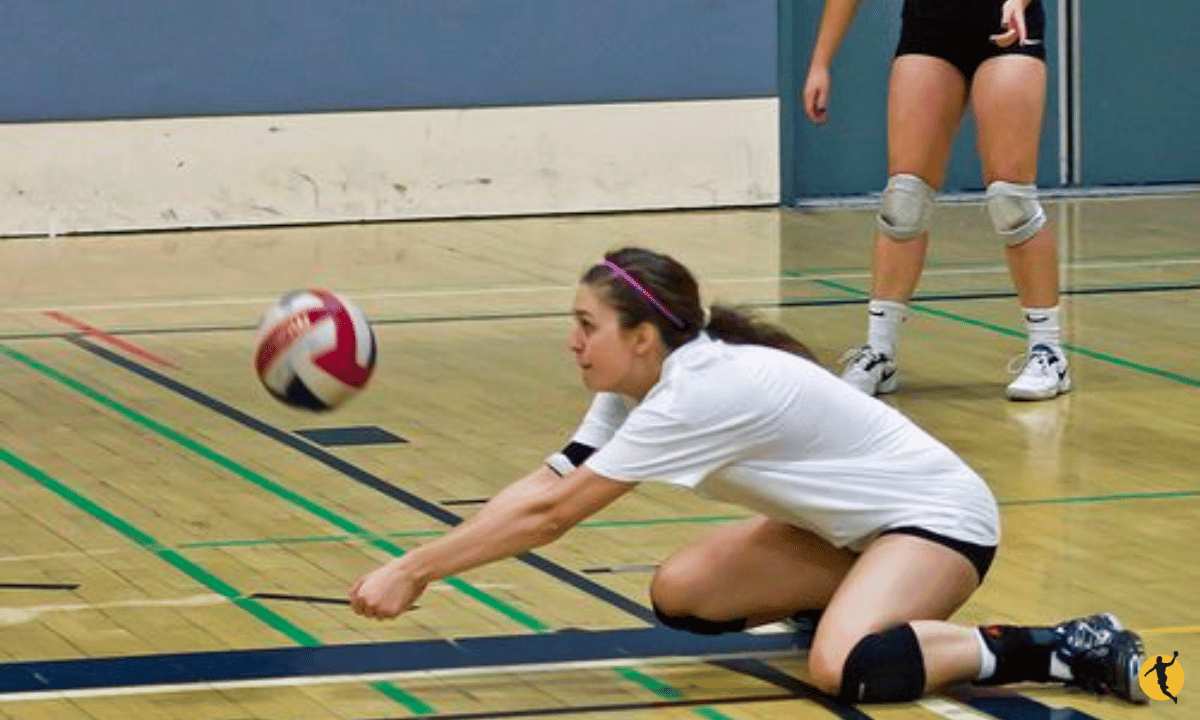
Moving forward, it’s essential to recognize that mastering the art of digging in volleyball isn’t just about knowing the techniques; it’s about continuous improvement and refinement. Your digging skills can always be honed, and here’s how to approach that journey:
Practice Drills
Specific digging drills will sharpen your reaction time, footwork, and technique. These drills can be tailored to mimic different types of attacks, angles, and game-like situations, offering a real challenge and helping you adapt to various scenarios on the court.
Video Analysis
Reviewing videos of your performance or analyzing professional players’ digging techniques can be enlightening. This visual feedback allows you to dissect your technique, positioning, and decision-making, identifying strengths and areas where improvement is needed.
Strength and Conditioning
We’ve touched on this before, but it bears repeating. Strength and conditioning exercises such as lunges, squats, planks, and agility ladder drills will augment your power, agility, and endurance. Building these physical attributes is key to enhancing your overall digging abilities.
Coaching and Feedback
Guidance from experienced coaches or even insightful teammates can be invaluable. Their feedback can help refine your digging technique and provide tailored advice, pinpointing specific areas for improvement. Collaborative learning and open communication foster a more enriched training environment.
Training to improve digging skills is a multifaceted process that combines focused practice, analytical thinking, physical conditioning, and collaborative learning.
It’s an ongoing effort that requires dedication, but the rewards are well worth it. Through consistent training and a willingness to learn, your digging skills will not only meet but exceed expectations. Whether you’re a beginner or a seasoned player, there’s always room to grow; these strategies will help guide that growth.
Also, Read: Volleyball Tips for Beginners: Master the Basics
Pass vs. Dig: What’s the Difference?
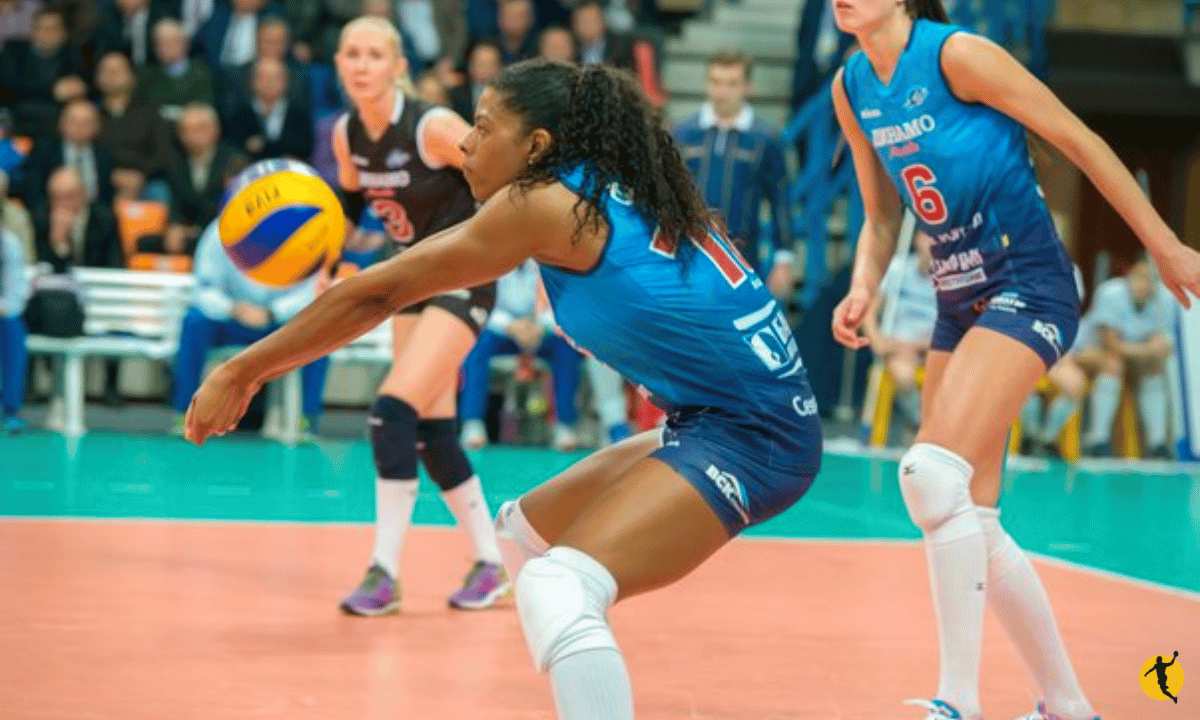
Transitioning to another essential aspect of the game, let’s delve into a common question many players and enthusiasts have: what’s the difference between a pass and a dig in volleyball? Though they may seem similar, understanding the distinction is vital for anyone involved in the sport.
Pass
A pass refers to any controlled contact made with the ball to direct it to a teammate, setting up a subsequent move like a set or an attack. This can be performed using the forearms, known as a forearm pass, or the hands, called an overhand pass. The term “pass” encompasses a broader range of plays and is a fundamental skill in volleyball.
Dig
On the other hand, a dig specifically pertains to a defensive technique used to receive an attacked ball from the opposing team. Executing a dig involves using the forearms to pass the ball to a teammate, keeping it in play, and preventing it from touching the ground. The term “dig” is typically used when referring to defensive plays, particularly when the attacking ball is hit with force and demands a defensive specialist or libero to make a controlled contact.
In summary, while both passing and digging involve receiving the ball, the context in which they are used makes them distinct. A pass can be a more general play, while a dig is a specialized defensive move, often employed under pressure. Recognizing this distinction can help understand the game’s strategies, positions, and responsibilities, enhancing enjoyment and performance.
Also, Read: Can You Wear Basketball Shoes for Volleyball?
Conclusion
In the fast-paced world of volleyball, the skill of digging stands out as a critical defensive technique. It’s not just about reacting to a powerful attack but mastering the art of positioning, timing, and control. The different types of digs, such as absorb pass, diving pass, and overhand pass, each offer unique challenges and rewards.
Effective digging is more than just physical prowess; it’s a mental game of anticipation and decision-making. From the contrast between a pass and a dig to the tailored methods for pain-free digging, the complexity of this skill is evident.
Whether you’re a seasoned professional or a beginner, understanding the intricacies of digging can elevate your game. It’s a skill that not only adds to the thrill of the match but is at the very core of the game’s spirit and strategy.
FAQS:
How Do You Get a Dig in Volleyball?
Getting a dig in volleyball requires anticipation, reflexes, and proper technique. It involves positioning yourself to receive the opponent’s attacking ball, usually a spike, with your forearms. The goal is to keep the ball in play and direct it to a teammate. Proper preparation, staying light on your feet, and maintaining a receiving position with your arms are key to executing a successful dig.
What Is the Difference Between Passing and Digging in Volleyball?
Passing and digging in volleyball have similarities, but they are different terms. Passing refers to any controlled contact with the ball to direct it to a teammate, whether for a set or an attack. Digging relates to a defensive move to keep an attacking ball in play. While passing encompasses a broader range of plays, digging is specific to defensive plays, especially when receiving a forcefully hit ball.
What Is a Dig Pass in Volleyball Called?
A dig pass in volleyball is commonly called a “dig.” It’s a defensive technique to receive an attacked ball, particularly a spike, from the opposing team. The dig pass requires the player to use their forearms to control the ball’s direction, aiming to keep it in play and setting up a teammate for a counterattack or a controlled set. The dig pass is an essential skill in volleyball, and its successful execution can make a difference in maintaining the rally and gaining an opportunity to score.

